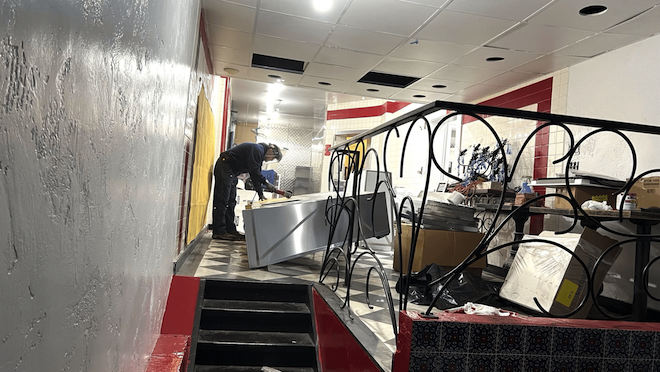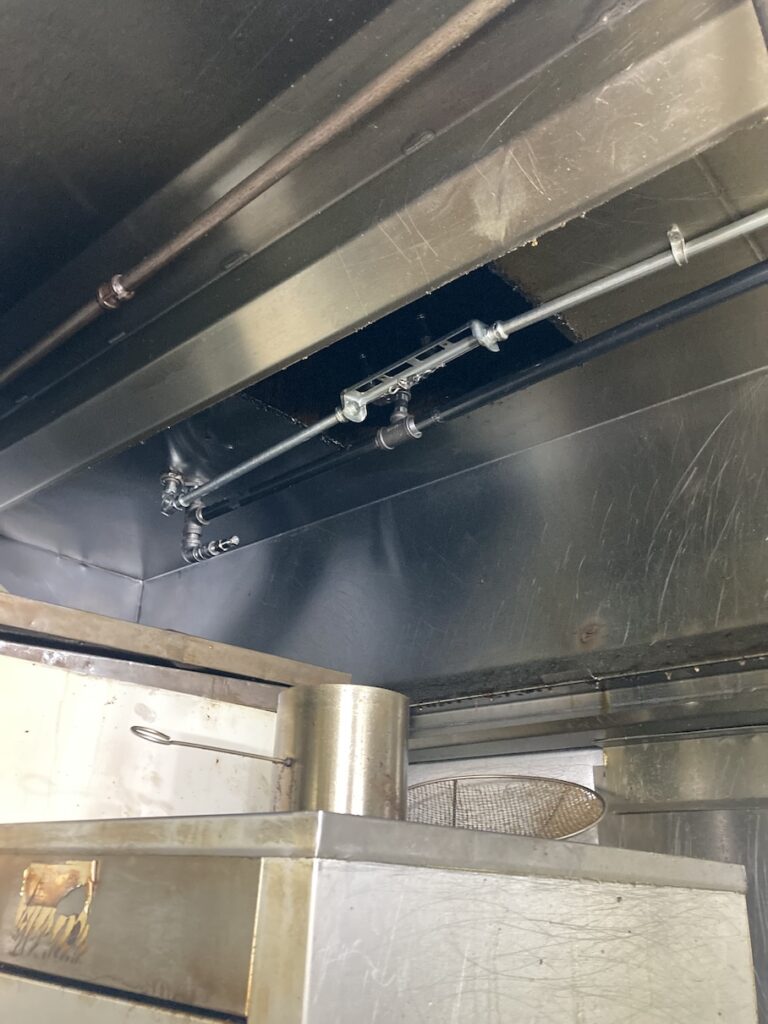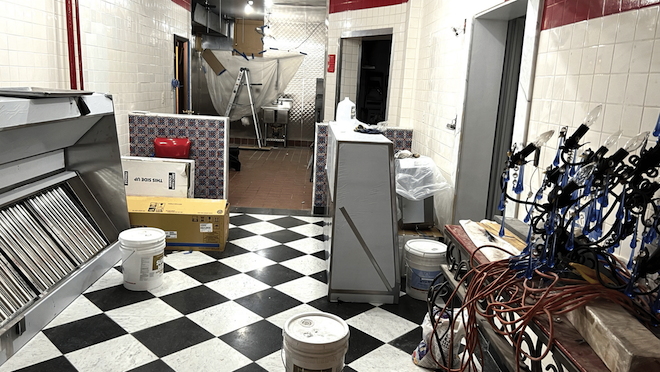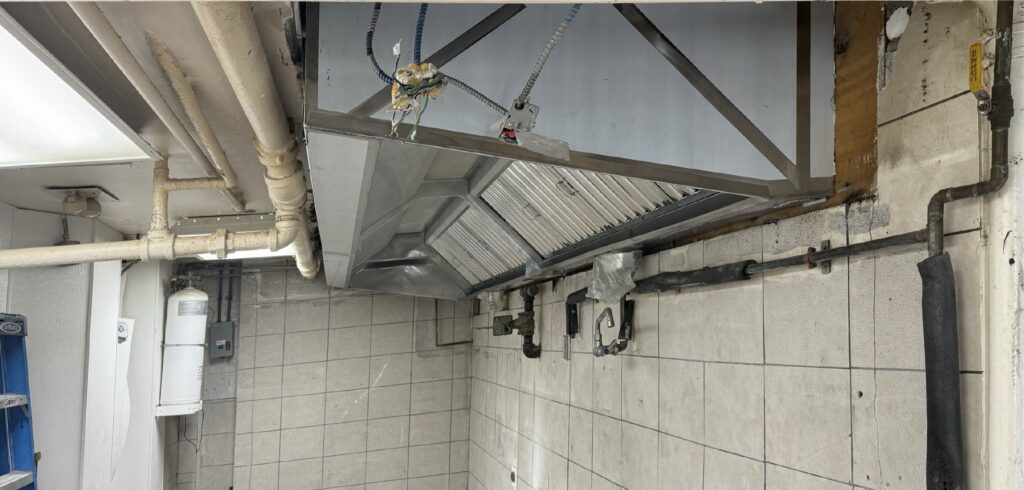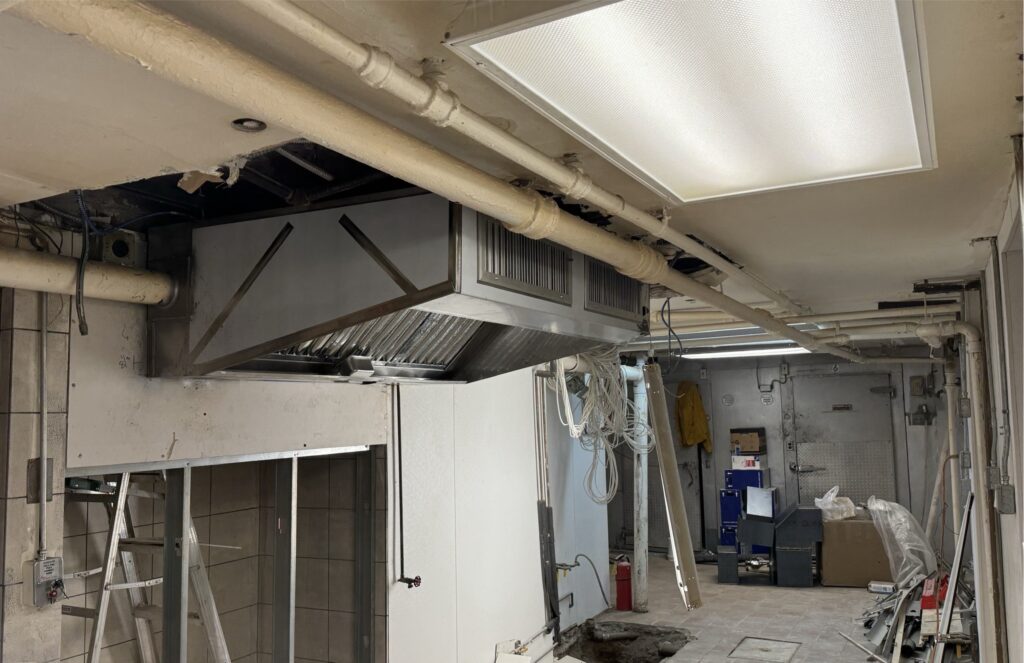In the compact, high-risk kitchens of NYC restaurants, both sprinkler systems and automatic fire suppression systems play essential roles in maintaining a safe working environment. Together, they form a multi-layered approach to fire protection, designed to swiftly and efficiently control and contain fires before they can spread. Here’s how they complement each other:
Targeted vs. Wide-Ranging Protection
Automatic fire suppression systems are strategically installed over high-risk areas such as stovetops, grills, hood vents, and ducts where grease buildup is common. These systems activate first when they detect heat, releasing a specialized chemical agent that quickly smothers flames without spreading oil or grease. This containment is essential in preventing small fires from becoming larger, potentially uncontrollable incidents.
Sprinkler systems, on the other hand, are installed across the broader kitchen area, providing extensive coverage. If a fire spreads beyond the cooking equipment—into storage areas or other parts of the kitchen—the sprinkler system activates, releasing water to cool down and contain flames over a wider area. By covering spaces that the suppression system may not reach, sprinklers offer a second layer of security.
Rapid Response and Minimizing Damage
The immediate action of the automatic fire suppression system on cooking equipment limits potential damage to high-risk areas and stops flames before they grow. In the event of a larger fire, the sprinkler system acts as a backup, minimizing the fire’s impact and potential damage to other areas of the restaurant. This combined approach helps limit fire damage to equipment and infrastructure, potentially reducing repair and recovery costs.
Sequential Activation for Safety and Efficiency
In a fire emergency, an automatic suppression system activates first, aiming to extinguish flames directly at the source before they spread. This prevents unnecessary activation of the sprinkler system in cases where the suppression system can handle the flames alone. If the fire escalates, the sprinkler system is triggered, providing the essential water-based backup to contain the fire’s spread. This sequential activation helps reduce the amount of water and cleanup required after an incident.

